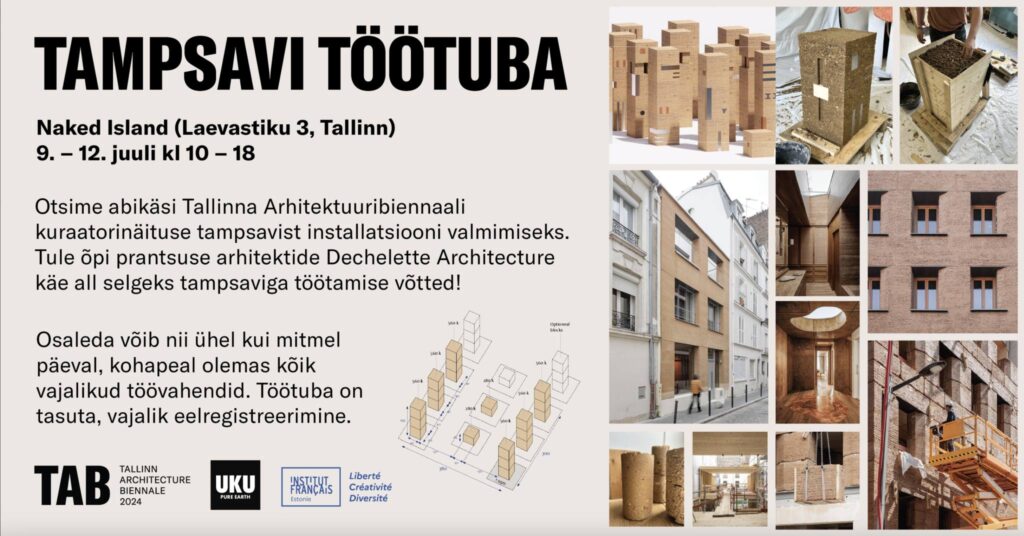Rammed earth workshop led by Déchelette Architecture
Rammed earth workshop led by Déchelette Architecture in Tallinn, July 9-12, 2024!
Are you interested in architecture and low-carbon materials? We are looking for volunteers to help Déchelette Architecture to create their piece for TAB2024 curatorial exhibition!No previous experience needed! Basic knowledge of English or French is needed.
Registration: info@tab.ee, https://forms.office.com/pages/responsepage.aspx…
The workshop to create the installation for TAB2024 will take place in Tallinn at Naked Island from July 9 until July 12. You can participate just one day or the whole time, working hours 10-18.
All the participants will learn how to work with rammed earth. Rammed earth is a clay mixture used to construct massive walls and for significant repairs to clay buildings. The ramming process leaves characteristic horizontal stripes on the wall surface, which are unique and eye-catching in the interior design. In addition to sustainability and low environmental impact, walls created from tamping clay also have an aesthetic advantage. The walls are mostly left unfinished, showing the natural texture and color of the clay surface.
Rammed earth technique has been used in various parts of the world for thousands of years and is still used today as a sustainable and cost-effective construction method. We’ll use rammed earth produced by an Estonian company UKU (https://uku.eu/en/clay-products/rammed-earth/)
Déchelette Architecture, created by a sister and a brother, is part of this new generation of architects who approach architecture through material:
«la matière première,» raw matérial; placed at the center of a constructive and creative device to re-examine the know-how versus the preciousness of the resources;
«la matière à penser,» thought matérial; because all architecture bears a political, economic and social responsibility and embodies a perspective of transition.
Their belief: the world of construction must evolve through the use of low-carbon materials and the intelligence of frugality, without compromising on the aesthetic and poetic quality of architecture.

Supported by: French Institute, UKU